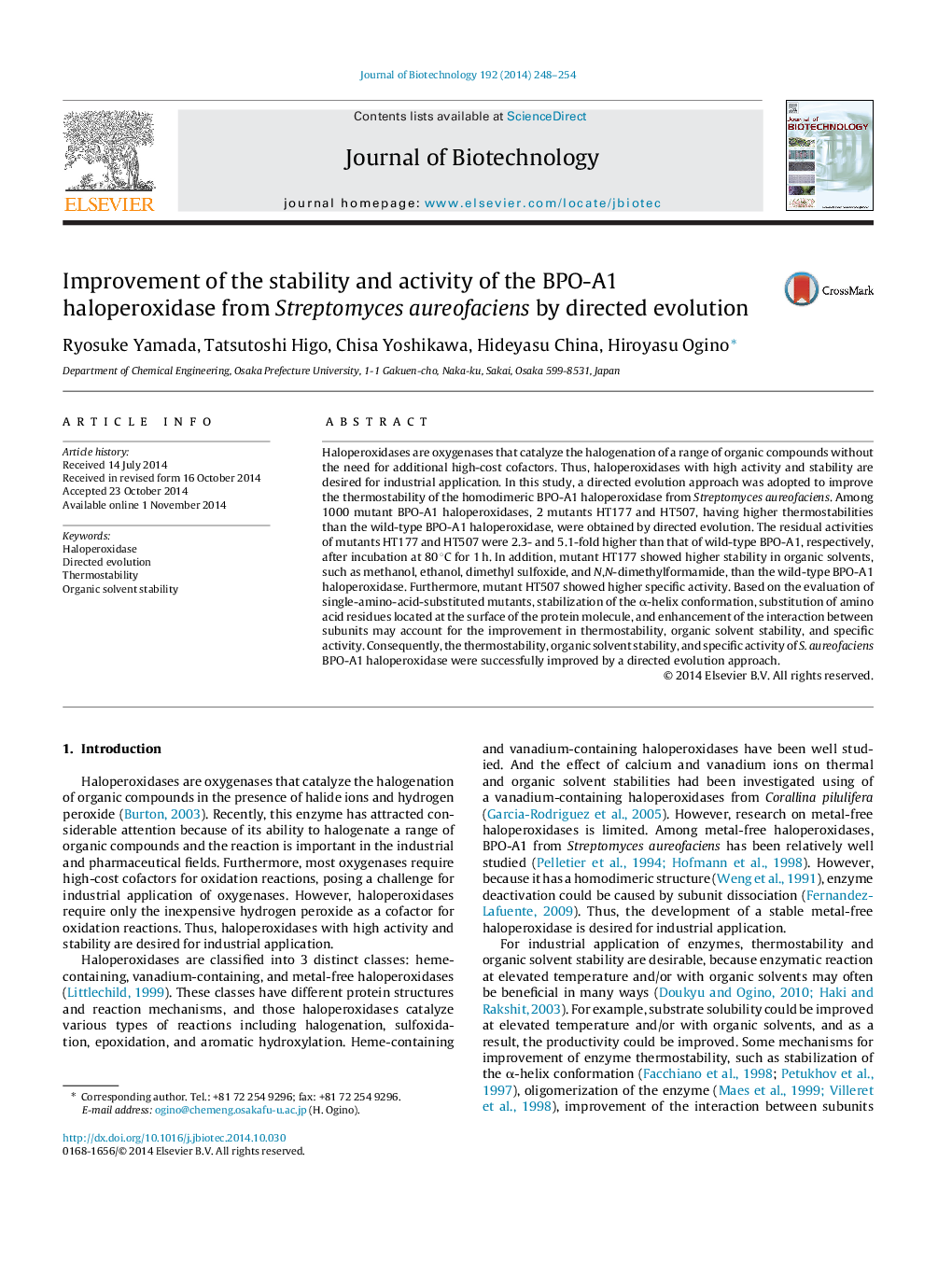| Article ID | Journal | Published Year | Pages | File Type |
|---|---|---|---|---|
| 6491345 | Journal of Biotechnology | 2014 | 7 Pages |
Abstract
Haloperoxidases are oxygenases that catalyze the halogenation of a range of organic compounds without the need for additional high-cost cofactors. Thus, haloperoxidases with high activity and stability are desired for industrial application. In this study, a directed evolution approach was adopted to improve the thermostability of the homodimeric BPO-A1 haloperoxidase from Streptomyces aureofaciens. Among 1000 mutant BPO-A1 haloperoxidases, 2 mutants HT177 and HT507, having higher thermostabilities than the wild-type BPO-A1 haloperoxidase, were obtained by directed evolution. The residual activities of mutants HT177 and HT507 were 2.3- and 5.1-fold higher than that of wild-type BPO-A1, respectively, after incubation at 80 °C for 1 h. In addition, mutant HT177 showed higher stability in organic solvents, such as methanol, ethanol, dimethyl sulfoxide, and N,N-dimethylformamide, than the wild-type BPO-A1 haloperoxidase. Furthermore, mutant HT507 showed higher specific activity. Based on the evaluation of single-amino-acid-substituted mutants, stabilization of the α-helix conformation, substitution of amino acid residues located at the surface of the protein molecule, and enhancement of the interaction between subunits may account for the improvement in thermostability, organic solvent stability, and specific activity. Consequently, the thermostability, organic solvent stability, and specific activity of S. aureofaciens BPO-A1 haloperoxidase were successfully improved by a directed evolution approach.
Related Topics
Physical Sciences and Engineering
Chemical Engineering
Bioengineering
Authors
Ryosuke Yamada, Tatsutoshi Higo, Chisa Yoshikawa, Hideyasu China, Hiroyasu Ogino,
